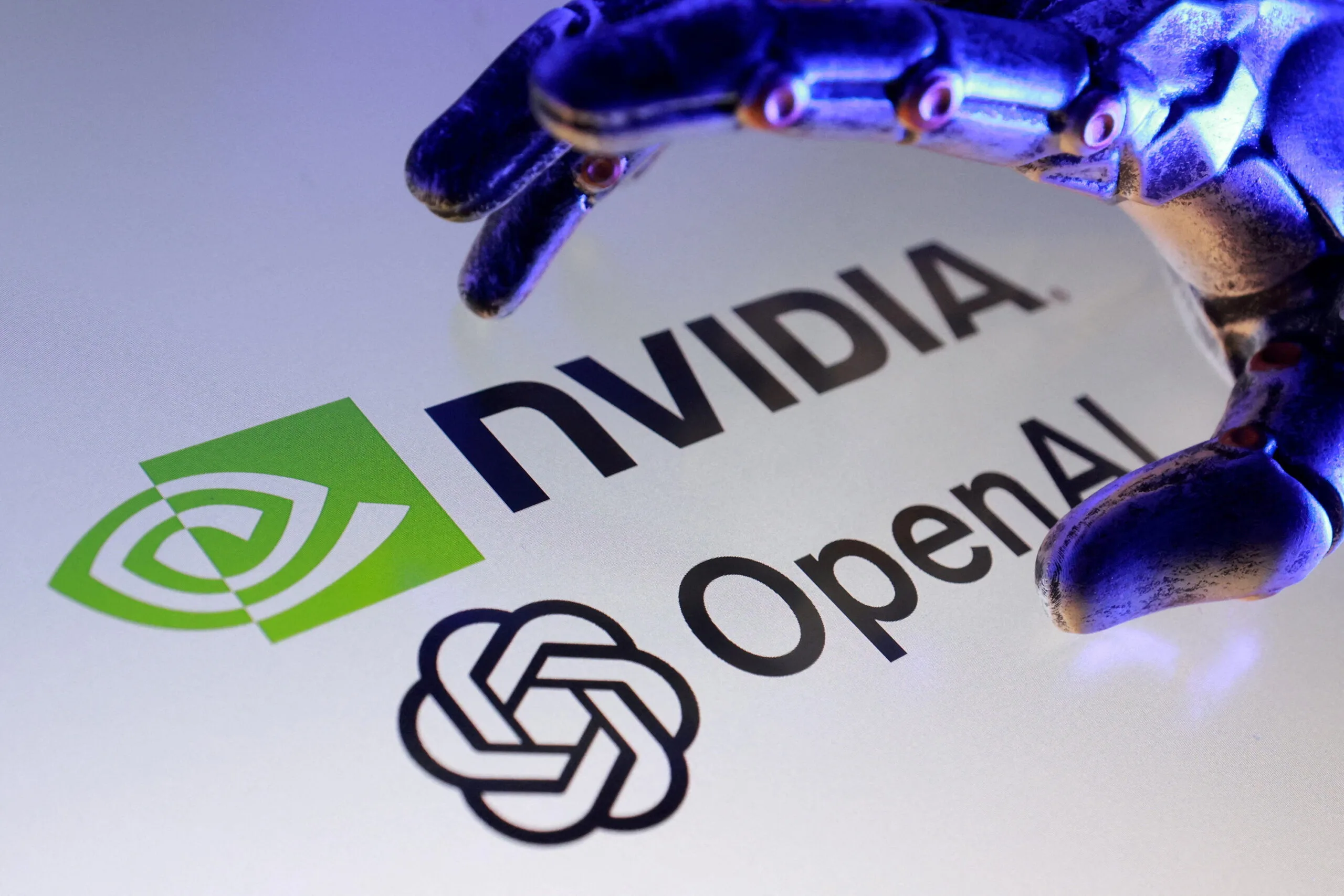
Nvidia is making a bold bet on the future of artificial intelligence. The company has announced that it will invest up to $100 billion in OpenAI over several years. This is not just about giving money, it is about building the backbone of the AI world.
Let us break this down in very simple terms.
What is the $100 Billion Plan?
Nvidia and OpenAI have a new agreement. Nvidia will help OpenAI build massive AI infrastructure, and in return, Nvidia will gradually invest up to $100 billion as that infrastructure is built.
Part of the deal includes deploying 10 gigawatts of Nvidia systems that means many, many powerful computing units across multiple data centers.
The deployment starts in the second half of 2026, with the first gigawatt being rolled out on Nvidia’s Vera Rubin platform.
Why $100 Billion? What’s Driving It?
- Compute is the foundation of AI
AI models need massive amounts of compute power. Nvidia wants to guarantee that OpenAI has access to the best hardware for years to come. - Lock-in demand for Nvidia hardware
By investing so deeply, Nvidia ensures its chips are used in many future AI systems. The money flows into infrastructure, chip orders, networks, and software that tie back to Nvidia. - Scale and predictability
With this plan, both Nvidia and OpenAI can plan better. Nvidia knows future demand for its products. OpenAI knows it has backing to build large-scale AI factories.
Key Details You Should Know
- Nvidia’s investment is progressive meaning it will pay or commit funds as each part of the infrastructure is deployed, not all at once.
- The first gigawatt is scheduled for 2026.
- When creators or companies build on this new infrastructure, they’ll likely use Nvidia’s ecosystem of chips, networks, software, and tools.
- OpenAI and Nvidia will align plans: what software OpenAI builds and what hardware Nvidia makes will evolve together.
How This Fits Nvidia’s Bigger Strategy
Nvidia isn’t just building a one-time deal with OpenAI. The company is also investing in dozens of AI startups from language models to robotics to data infrastructure. These investments reinforce Nvidia’s position across the AI stack.
Some places Nvidia is investing include:
- Reflection AI, where Nvidia led a $2 billion funding round.
- Thinking Machines Lab, created by the former CTO of OpenAI, Mira Murati.
- Other AI infrastructure firms, robotics and model companies, all of which help expand the reach of Nvidia’s technology
By supporting these startups, Nvidia ensures that as AI grows into new fields, it will be powered by Nvidia’s hardware and software.
Challenges and Risks
- Antitrust and regulatory scrutiny
Tying two big players, the dominant hardware maker and the dominant AI model maker, could raise concerns about competition. - Huge capital commitment
$100 billion is massive. Nvidia must ensure returns justify the investment. - Technological shifts
If a new kind of chip, architecture, or AI method emerges that doesn’t need Nvidia’s gear, this bet could weaken. - Execution risk
Building large AI data centers at scale is complex. Delays, technical issues, or power constraints could slow things down.
What This Means for the Industry and You
- For AI developers: More access to powerful infrastructure may reduce barriers. Better tools, faster experiments, more innovation.
- For competitors: Companies like AMD, Google, or startups may need to find new niches or challenge parts of Nvidia’s stack.
- For users: Smarter, faster AI experiences in apps, tools, and services you use.
- For the future of computing: This deal signals that compute power, especially reliable, universal compute is the core of the next big tech era.
The Bottom Line
Nvidia’s $100 billion investment plan with OpenAI is one of the boldest moves in tech in recent years. It’s not just about money, it’s about shaping the infrastructure behind the next generation of AI.
This deal could define who controls AI compute, which tools get built, and how fast new AI features arrive. If everything works, Nvidia and OpenAI will co-design the future of AI infrastructure. If it fails, it could become a cautionary tale in overreach.
Either way, this is a development everyone in tech, business, and even everyday app users should watch. The next few years will show whether this gamble pays off for Nvidia, OpenAI, and the AI world at large.
Also Read: Hackers Steal 70,000 Government ID Photos from Discord Vendor – Everything You Need to Know
